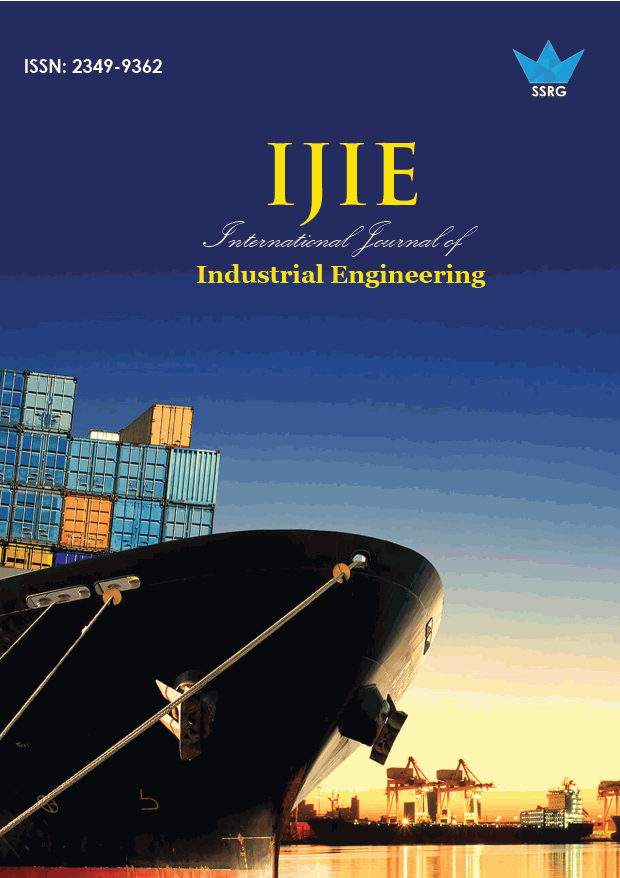Design of Four Input Buck-Boost DC-DC Converter for Renewable Energy Application

| International Journal of Industrial Engineering |
| © 2014 by SSRG - IJIE Journal |
| Volume 1 Issue 2 |
| Year of Publication : 2014 |
| Authors : A.Thiyagarajan and B.Gokulavasan |
How to Cite?
A.Thiyagarajan and B.Gokulavasan, "Design of Four Input Buck-Boost DC-DC Converter for Renewable Energy Application," SSRG International Journal of Industrial Engineering, vol. 1, no. 2, pp. 6-11, 2014. Crossref, https://doi.org/10.14445/23499362/IJIE-V1I2P102
Abstract:
Nowadays, electricity along with power electronics have become essential part of our life. Power consumptions are increasing every year due to industrialization in our country. DC-DC converter topologies such as buck, boost, buck-boost, cuk converters provide us with ability to step up and step down the input DC voltage precisely. DC-DC converter is needed to convert directly to the desired voltage from the renewable energy sources such as solar cell and Fuel cell. In this paper, we proposed four input buck-boost DC-DC converter which is used in such system to improve efficiency, performance and also to reduce cost and component count. Four input buck-boost dc-dc converter is designed through derivation by using five Single pole Single Throw (SPST) switches as a building block. Switch realization and operating characteristics of proposed four input buck-boost dc-dc converter is obtained with their voltage transfer ratios in buck and boost modes of operation. The performances of the dc-dc converter are simulated using MATLAB/simulink
Keywords:
Buck-Boost DC-DC conversion,Single pole Four throw Switch,modes of operation,MATLAB/simulink.
References:
[1] Karteek Gummi, Mehdi Ferdowsi,”Derivation of New Double-Input DC-DC Converters Using H-Bridge Cells as Building Blocks” Industrial Electronics, IECON 2008. 34th Annual Conference of IEEE,pp. 2806-2811, Nov. 2008.
[2] Karteek Gummi, Mehdi Ferdowsi,”Double-Input DC–DC Power Electronic Converters for Electric-Drive Vehicles—Topology Exploration and Synthesis Using a Single-Pole Triple-Throw Switch”, IEEE Transactions on Industrial Electronics, vol. 57, NO. 2 pp. 617-623, Feb 2010.
[3] Karteek Gummi, “Derivation of double-Input DC–DC converters using the building block methodology”Msc.Thesis, Missouri University of Science and technology, 2008.
[4] Chi Kin Taffy Wong, “A multiple-input single output DC-DC converter for the DC House Project,” Msc Thesis,Faculty of Clifornia Polytechnic University, Oct 2011,
[5] Y. M. Chen, Y. C. Liu, F. Y. Wu, “Multi-input DC-DC converter based on the multi-winding transformer for renewable energy applications,” IEEE Transactions on Industry Applications, 2002, vol. 38, pp. 1096-1104.
[6] A. D. Napoli, F. Crescimbini, S. Rodo, L. Solero, Multiple input DC-DC power converter for fuel-cell powered hybrid vehicles,” IEEE Power Electronics Specialists Conference, 2002, vol. 4, pp. 1685-1690.
[7] K. Kobayashi, H. Matsuo, Y. Sekine, 2005, “Novel Solar-Cell Power Supply System Using a Multiple-Input DC–DC Converter,” IEEE Industrial Electronics Transactions, vol. 53, pp. 281-286.
[8] Y. M. Chen, Y. C. Liu, S. H. Lin, 2006, “Double-Input PWM DC/DC Converter for High/Low-Voltage Sources,” IEEE Transactions on Industrial Electronics, vol. 53, pp. 1538-1545
[9] L. Solero, A. Lidozzi, J. A. Pomilio, , 2005 “Design of multiple-input power converter for hybrid vehicles,” IEEE Transactions on Power Electronics, vol. 20, pp. 1007-1016.

 10.14445/23499362/IJIE-V1I2P102
10.14445/23499362/IJIE-V1I2P102